

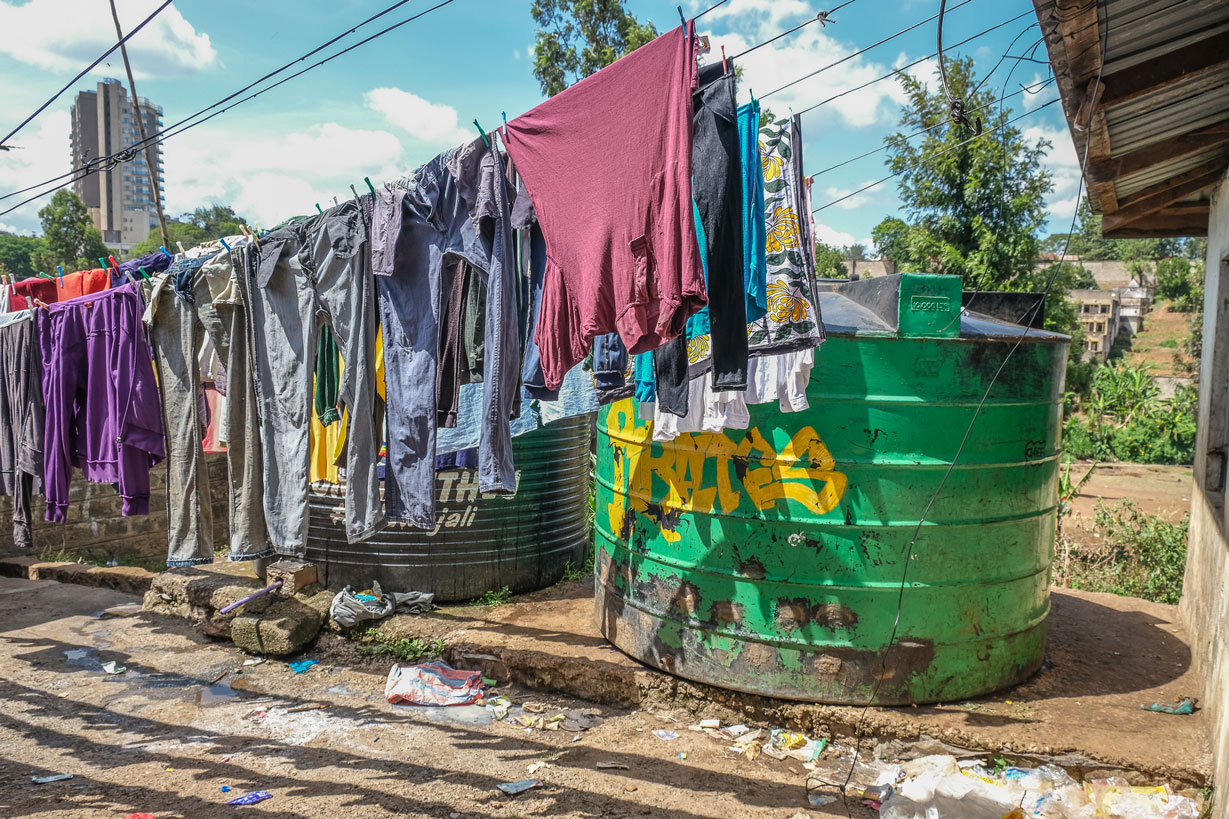
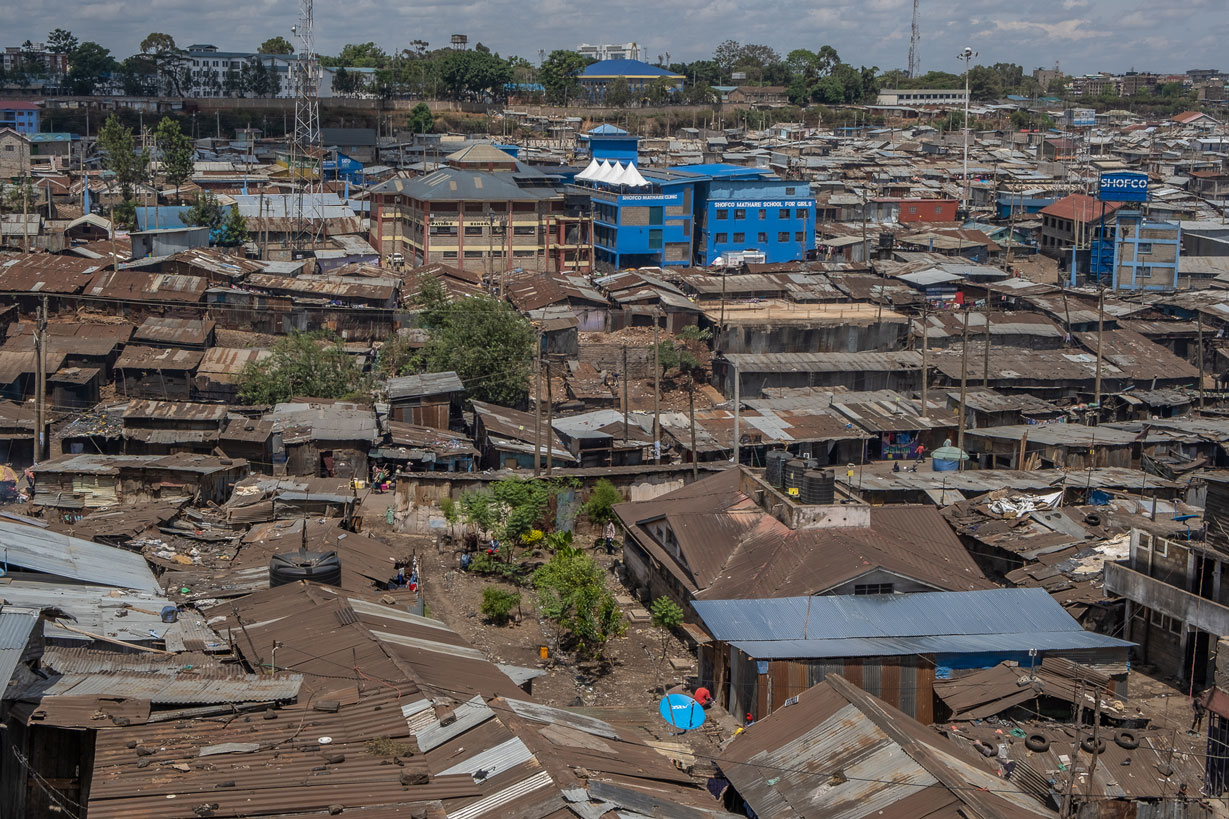
Nairobi Gang Members Turn to Greenery to Change Their Lives and City
Poor youth in the urban jungle lay down their arms to focus on the environment
Donning a knee-length green work jacket and black rubber boots, Evans Otieno rounds his lips and smacks his tongue on the rim of his mouth, producing a loud, repetitive clicking sound. Dozens of white and gray pigeons flap their wings, sending dirt into the air, as they fly in Otieno’s direction and settle down around him.
“I’ve learned that you can communicate with animals and the environment just like you can with a human being,” the 30-year-old tells me. He carries a large burlap sack of bird feed over to the pigeons and pours it onto the ground. The birds frantically swarm the area, pushing one another aside to get their share.
Otieno steps over rainbow-colored tiles built into the bright green grass and takes a seat on a bench made from purple-painted tires. Colorful flowers grow from pots made out of old toilets, computer monitors, and various other items that Otieno and his friends foraged from dumpsites.
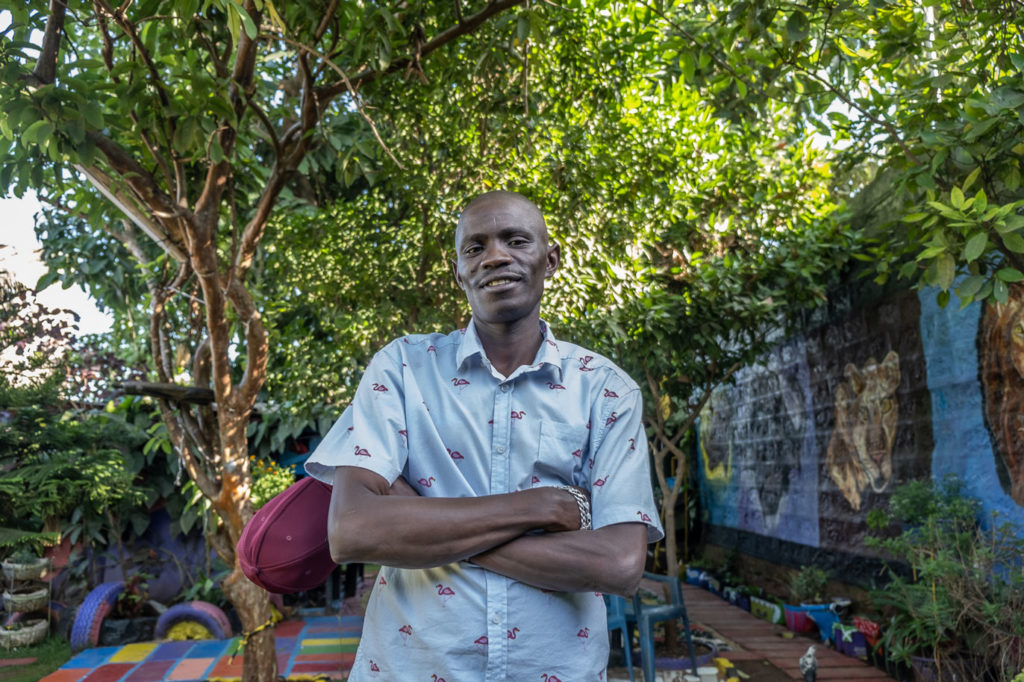
This is the Believers Garden, a rare ecological oasis in Dandora, an impoverished suburb of Kenya’s capital, Nairobi. Just a few years ago, Dandora was considered the most dangerous part of the city, where armed robberies were commonplace and some of the country’s most notorious gangs set up their bases.
Traveling here is complicated, as drivers of “boda boda” (motorcycle taxis) will commonly respond in surprise when a request for a ride to Dandora is made. “Why would you want to go there? It’s too dangerous,” they often reply, sometimes increasing the price to cover the perceived risks of driving through the area.
Along the way to the garden, one passes the Dandora municipal dumpsite, Nairobi’s main dumping ground and one of the largest landfills in Africa. A strong, putrid smell wafts through the air as lines of garbage trucks sit idly, waiting to enter the site while people forage through mounds of waste to retrieve items they can sell.
But in Believers Garden, located about a mile from the municipal dumpsite, the avocado, papaya, guava and orange trees produce a calming and refreshing breeze. Various species of birds chirp and sing from the overhead branches.
It is hard to imagine that this is Dandora, the place many Kenyans still fear. It is equally hard to imagine that Otieno grew up here. Like some youths in Nairobi’s low-income neighborhoods, which continue to suffer from severe government neglect and soaring unemployment, Otieno was forced to steal for a living.
“Dandora was the most dangerous ’hood in Nairobi,” Otieno says, leaning back on the bench and crossing his arms in front of his chest, a silver lion ring on his index finger glistening under the sun. “All of our role models were thieves, so all of life was about stealing and surviving.”
Today, though, Otieno spends his days caring for the Believers Garden, which in 2014 he started along with a few other troubled youths in the neighborhood. If there are no flowers to be planted and the turtles, pigeons, rabbits and guinea pigs have all been fed, Otieno often sits peacefully, quietly observing the environment and animals.
As if listening to divine messages, Otieno is the first of many disgruntled youths in Nairobi’s low-income neighborhoods who put down their weapons, one by one, and transformed their gangs and criminal networks to serve their communities instead. Long ignored by their government, 70% of Nairobi’s population lives in areas that lack access to adequate sewage, electricity or water systems. Otieno and others like him have been picking up where their government has failed.
“These are our neighborhoods, so we need to be the ones who bring the change,” Otieno says, as pigeons continue pecking at the grass around us. “We shouldn’t be sitting around and expecting people from outside to come here and help us. We should be the ones doing it ourselves.”
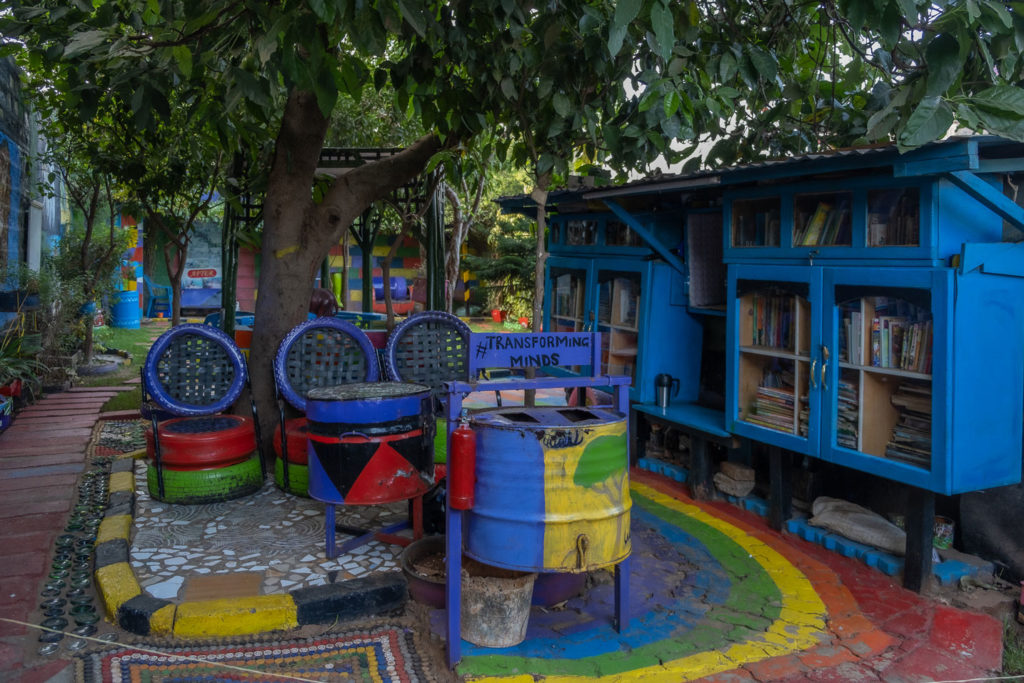
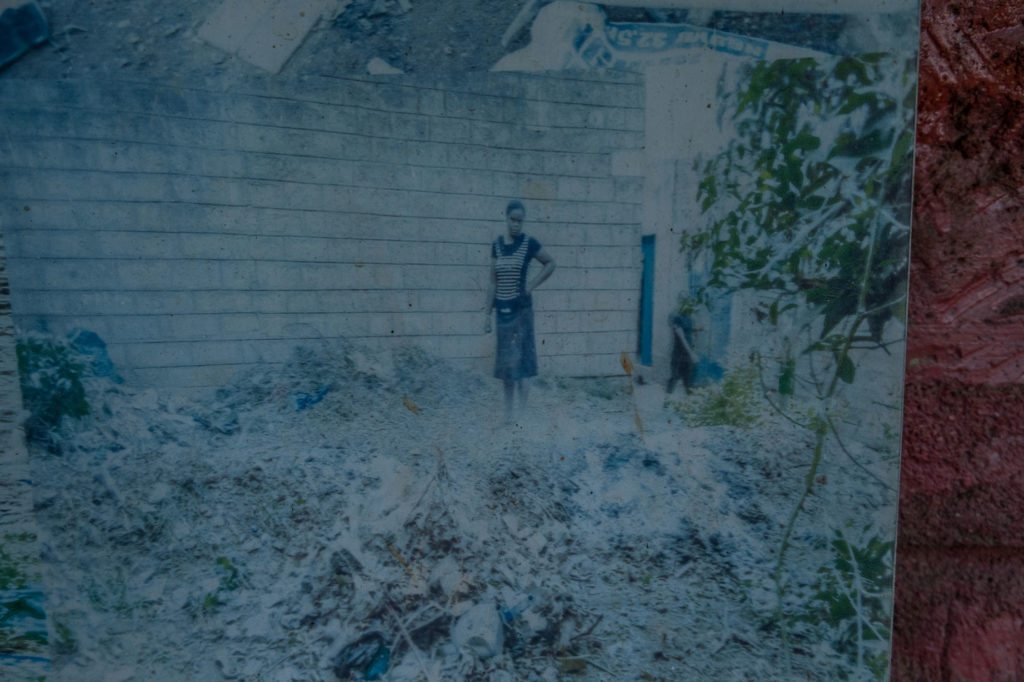
“Crime sio poa” (crime is not cool) is painted in massive block letters on walls abutting the sides of roads in Dandora, part of the government’s feeble attempt to curb crime in the suburb.
Dandora, however, was not always a crime hub. It was established as an estate in 1977, about 6 miles from the city center, and partially financed by the World Bank to provide a higher standard of housing in the city. Dandora had once been a sought-after area of Nairobi.
But in the 1980s, large public companies, most notably the Kenya Planters Cooperative Union (KPCU), which had employed hundreds in Dandora, shuttered much of their operations because of mismanagement and corruption, including embezzlement. The closures left generations of unemployed youths in their wake. Mugging and robberies became a rite of passage for those growing up here.
“It was really tough in Dandora, like a war zone,” Otieno says. “All day you would hear gunshots, and every day you would hear of someone being killed [from police or mob vigilantes]. If a day ever ended in Dandora without hearing a gunshot, then you were not in Dandora.”
Otieno’s parents died when he was around 6, and soon after that his grandmother, who had become his guardian, also died. He sold secondhand clothes to survive and rummaged through the municipal dumpsite to find food or items to sell. By the time Otieno was 13, he had already begun robbing and stealing.
Youths controlled specific territories in Dandora, which they referred to as their “shambaa” (farm). “So we would always communicate to each other about where we were robbing so we didn’t impede on another group’s shambaa,” Otieno says. “After the robberies we would all meet at a club in town, buy beers and enjoy ourselves. And then the next morning at 5 we would start robbing again when we came back home.”
There was a superstition among the gangs that if someone took another’s life, their own life span would be shortened; therefore, Otieno tried to avoid using guns during robberies, instead wearing long jackets and touching his waist to insinuate he was armed. “Dandora was a place where someone could steal everything you had in broad daylight and no one would care to intervene,” he says. Phones were always preferred because they were a fast and easy sell to brokers.
One incident in 2013, when Otieno was 20, finally forced him to rethink his path in life. “I was with three of my friends,” he remembers. “We just finished a robbery mission at around 8 p.m., and we were checking the money we made that night. Little did we know that while we were robbing people, they were forming a mob and following us.”
As the broker came to meet Otieno and his friends and they haggled over the prices of the stolen phones, Otieno suddenly felt an urge to urinate. He stepped aside into a dark area a few yards from his friends.
“The moment I left, a mob rushed my friends. They beat them with pangas [machetes], rungus [wooden batons], and smashed their heads with stones,” Otieno says. “They put a tire over their heads, doused them in gasoline and lit them on fire, just to make sure they were dead.” His gentle voice and the peaceful ambience of the Believers Garden contrast sharply with the pain in his voice.
“The mob saw me and started running towards me. They were screaming, ‘Mwizi! Mwizi! [Thief! Thief!].’ I’m a very good runner, and that’s what saved me. I ran so fast. I was vomiting and running and vomiting and running, until I lost them.”
Otieno went into hiding for three months in Mathare, one of Nairobi’s largest informal settlements. “I was already so tired of this way of life,” he says about his return to Dandora. “I have a photo album with all my friends in it. Whenever someone died I would put an X over their pictures. I was looking through this album, and every photo had an X across it.”
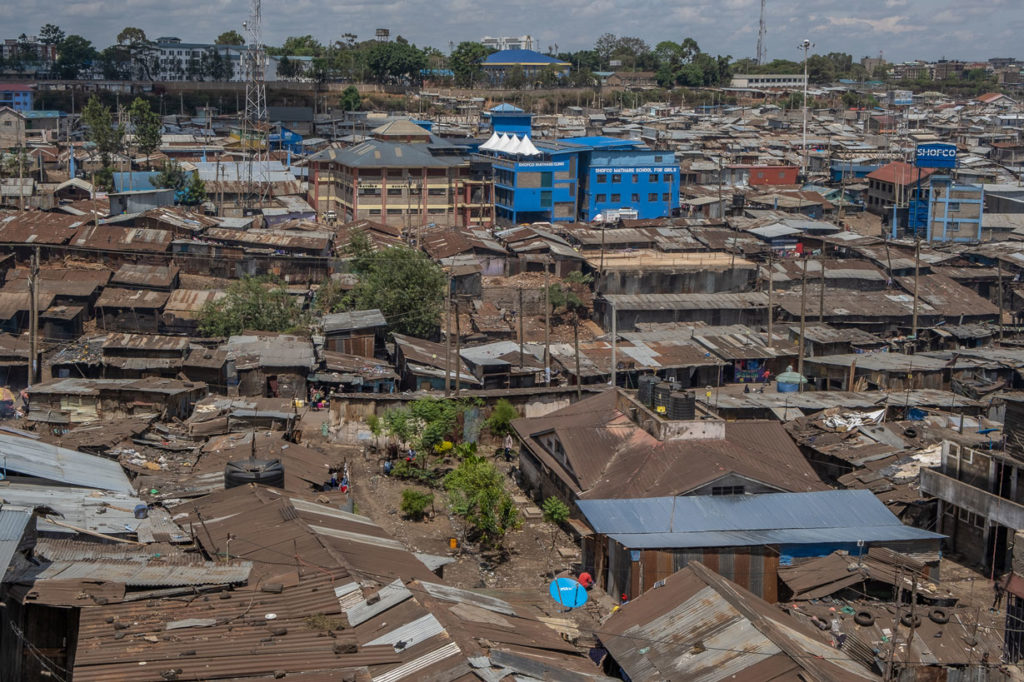
Otieno grappled with why he was spared while his friends were killed. He came to the conclusion that it was a “call to nature” that had saved him. “If it was not for that call to nature, I would be dead. So I felt like I needed to dedicate the rest of my life to nature to give back for the life that was given to me,” Otieno says.
He started with trying to find something to do that would prevent him from returning to a life of crime and set his sights on cleaning up a dumpsite near his home. Another friend joined in. They transformed it into a parking space and began charging people small fees to leave their cars there. A few plots away from the parking space was another large dumpsite. Otieno grabbed a shovel and started alone, sifting through the trash and sorting it out. He found an old toilet bowl and planted a flower in it.
“I didn’t tell anyone what I was doing at first so there was a lot of whispering from people because they thought I had gone mad,” he says. “Imagine this man who used to spend his days robbing people, now with no money. He’s going around picking through dumpsites and carrying around old tires. People had never seen that before. When you’re bringing change for the first time you will always look like an insane person.”
He mobilized other Dandora youths to help by buying them lunch with the small amount of donations he collected from the community. Then, a private developer approached Otieno offering him the equivalent of about $13,000 to part with the land, an amount that could have transformed Otieno’s life. To the dismay of his fellow youths, Otieno refused the money; but he kept on, continuing to regenerate the environment and planting grass and fruit trees.
It took years for the youths to see the result of their work. But eventually, the greenery of the shrubs and trees they planted grew denser and the flowers started blooming, creating a breathtaking, colorful garden. It truly has become one of the most beautiful places in Nairobi. They collected and repurposed materials to build a library and playground for the neighborhood children on a nearby plot that had also been a dumpsite.
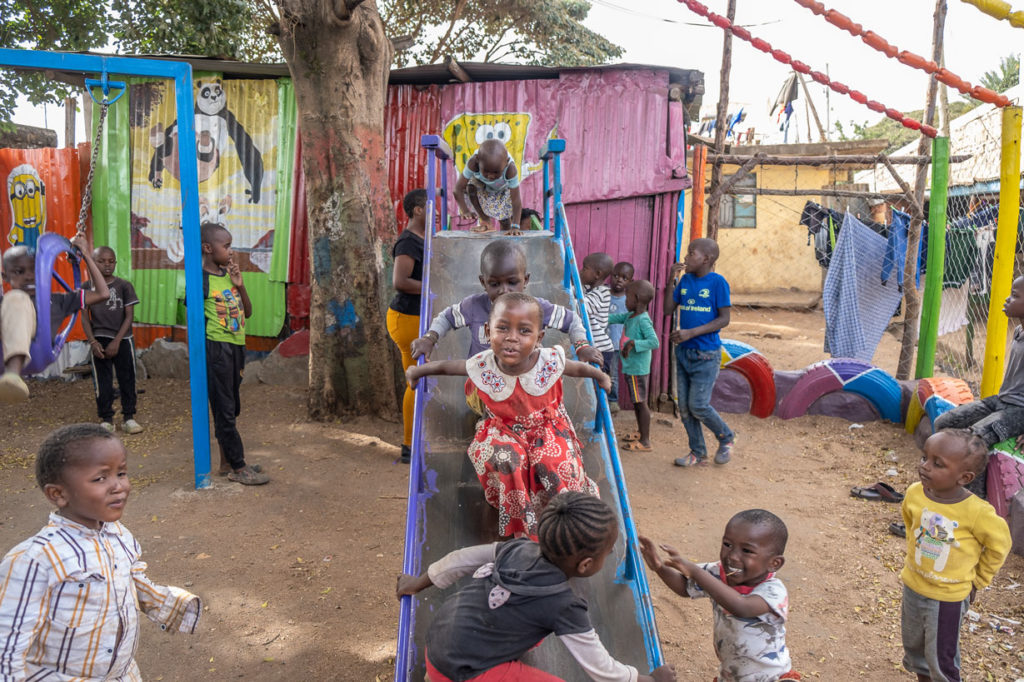
Otieno also saw an opportunity to provide employment for the masses of unemployed youths in Dandora. Building from the shambaa system, Otieno worked with youths to provide security, collect trash and clean the streets of their communities, and in exchange community members would each contribute about $1 a month for these services.
Crime in Dandora has dropped significantly, and scores of youths now receive an income; their criminal networks have been reorganized to provide services usually fulfilled by the county government. Throughout Dandora, youths have emulated Otieno’s garden project, creating green spaces to embrace the positivity that accompanies their closeness to nature. Nowadays, bird species never before seen in Dandora are singing from fruit trees.
“If we take care of the environment and our communities, then they will take care of us,” Otieno says. “This nature has saved a lot of youths who would have otherwise ended up killed.”
Little did Otieno know that a group of youths in Mathare, the informal settlement west of Dandora where he had once fled, was coming to the same conclusions. They called themselves the “pirates.” Their meeting place was in a large, abandoned government building in the area of Mlango Kubwa, meaning “big door,” marking the entrance to the neighborhood.
Frederick Kithuka, 33, known among the youths as “Sparrow,” was the elder head of the pirates. He says he began stealing when he was 7. “Criminals were the only ones around here who had any money. There are no jobs here, so crime is all we had. I was a bad guy. I was mugging people everywhere, even breaking into houses. I was using knives, guns, even hammers.”
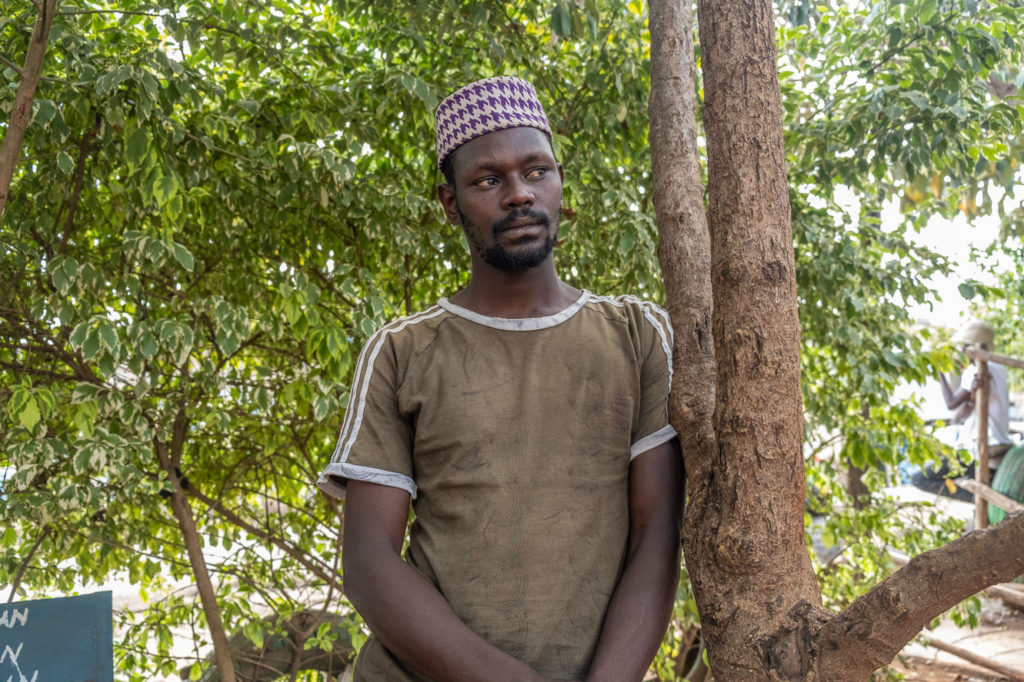
These government buildings were on a 3-hectare piece of public land earmarked for the official offices of Kenya’s National Youth Service. But because of corruption, the project was abandoned halfway through. Mlango Kubwa is located about 3 miles from the city center and borders upper-middle-class areas.
“This used to be our base and where we would meet after our robberies,” says 25-year-old Anthony Mugendi, known locally as “Chief.” He gestures to one of the buildings, now decorated with a mural of Wangari Maathai, the late Kenyan environmentalist and activist. “Here, we’re surrounded by places where fancy people live. … So this gave us an opportunity. Those people were our main targets.”
But the violence cuts both ways. Evictions and demolitions are common in Mlango Kubwa, as poor residents are routinely pushed aside to make way for Nairobi’s urban development. According to Diana Gichengo, a campaign manager at Amnesty International Kenya, Nairobi’s sharp inequalities are systemic and historic, creating dramatically contrasting realities between populations in the city.
It is common in Mlango Kubwa for private developers to bribe desperate and unemployed youths to light homes on fire in the middle of the night, violently evicting residents, some losing their lives. The city’s fire service neglects these areas, taking hours to arrive when the fire station is just five minutes away from the neighborhood. Developers then build high-rise buildings to serve the city’s elite.
Scores of the pirates became victims of extrajudicial killings. All residents in Nairobi’s impoverished neighborhoods have nightmarish tales of “killer cops,” who have allegedly killed scores of youths in the informal settlements — often referring to them as “criminals” or “thieves” to justify their killings.
“We were at war with the police,” Mugendi explains. “It was a war we couldn’t win, and it brought us so much suffering. We spent all our time fighting with the police. Every time we tried to defend ourselves through protests, the police would just kill more of us.”
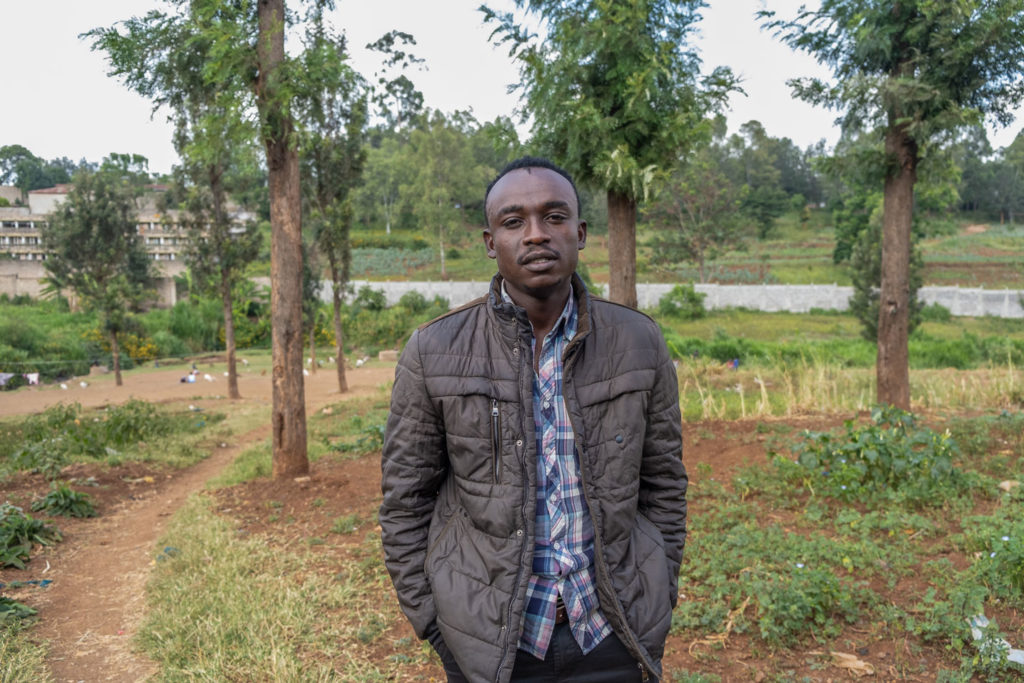
Mathare has the highest cases of police killings, according to Patrick Mutahi, a researcher at the Kenya-based Center for Human Rights and Policy Studies. Here, the most infamous “killer cop” is Ahmed Rashid, from the nearby Pangani police station.
According to Missing Voices, a coalition of organizations seeking to end enforced disappearances and extrajudicial killings in Kenya, Rashid has allegedly killed dozens of young people in the informal settlements. Rashid has denied any wrongdoing, insisting he has always operated within the country’s legal parameters.
“Killer cops are a big problem in the informal settlements,” Mutahi says. “And they operate with impunity. This is because of the criminalization of young people in these places. They are seen as criminals, sex workers or the ‘others’ of society. Their lives are seen as dispensable.”
Despite the efforts of various human rights groups to present evidence of Rashid’s criminality to the government and the Independent Policing Oversight Authority (IPOA), no punitive action has been taken against him.
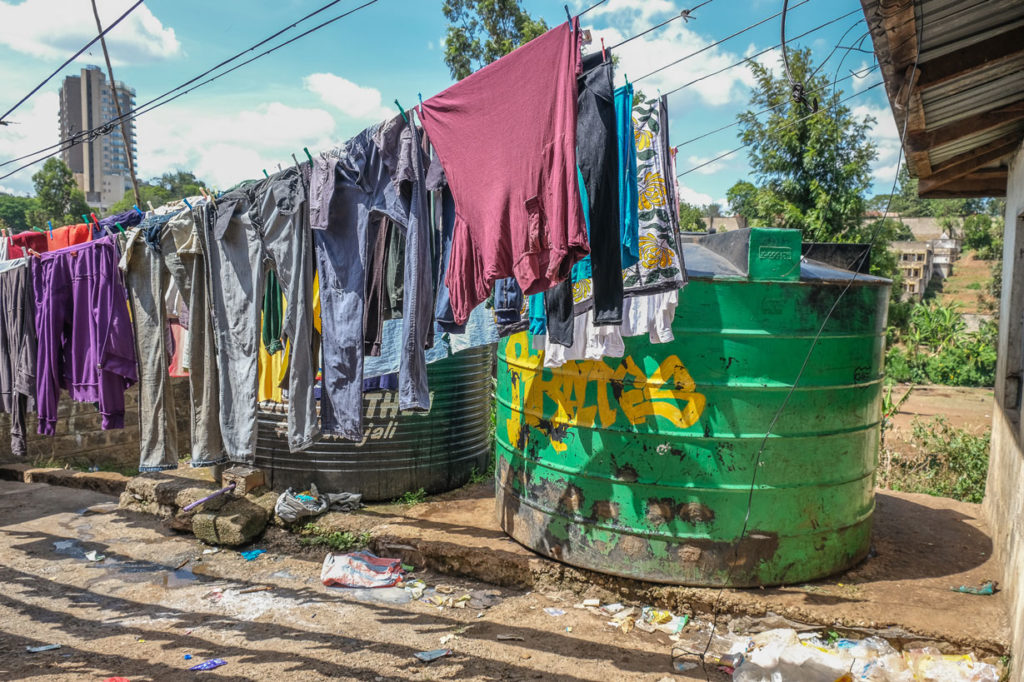
In the same abandoned building in Mlango Kubwa where the pirates organized their robberies, they began to strategize what they could do to survive before the police killed them too. It was a choice between life and death.
They realized that their community was the only entity that could protect them. About three dozen youths from the gang began brainstorming about how they could gain the respect of their community, which could protect them from police brutality and earn them an income that would prevent them from falling back into a life of crime.
The youths decided they would meet the needs of their community by providing utility services that the government fails to provide.
“We are the change-makers here. Trust me, if you rely on the government here, you will be stuck in misery for generations,” Mugendi says. “The government does nothing but make life harder for us. Look at our neighbors in Pangani,” he says, tilting his head in the direction of the high-rise building that looms over Mlango Kubwa. “They are all well taken care of. For us, they don’t think about how they can develop our communities. They only think about how they can demolish them and then replace us with something else.”
The youths started with digging an underground pipe from the city’s water supply, illegally tapping into it and redirecting it to the public land where they erected three large water tanks that they purchased with the help of a few community members. There were also abandoned washrooms that the youths cleaned up for the community. Many homes in Mlango Kubwa lack these facilities, and people are forced to relieve themselves on the streets and in alleys. They now provide clean water and washrooms to community members for a low fee of about 9 cents for each use.
The building where they had once planned their robberies has been transformed into a community hall where residents can hold meetings or watch movies and documentaries for a small fee. Now women and families use the facilities, lessening the likelihood of police attacking the area.
“Then we saw that sometimes people didn’t have food, so we decided to start growing food on that same piece of land,” Mugendi says. They began to grow spinach, collard greens and other vegetables, which they sell to the community at low prices, and transformed part of the area into a park. They also planted trees, each one symbolizing a youth in the community who was allegedly killed by Rashid.
Victims’ families visit the park to water and care for the trees that memorialize their loved ones, and other families bring their children who can safely play in the area without being cut by scattered glass and trash on the street. The pirates then saw the need for trash collection and security in the neighborhood and began providing these services as well.
As they transformed the land, the pirates adopted a new name for it: Mathare Green Park.
Yet despite this, the police violence continued unabated. At any opportunity, police barged into the area, shooting tear gas and live bullets at the reformed youths in the park, according to Mugendi. “We would be in the building organizing for the community and the police would always come in and make us strip down to our underwear,” Mugendi says. “They continued to terrorize us.”
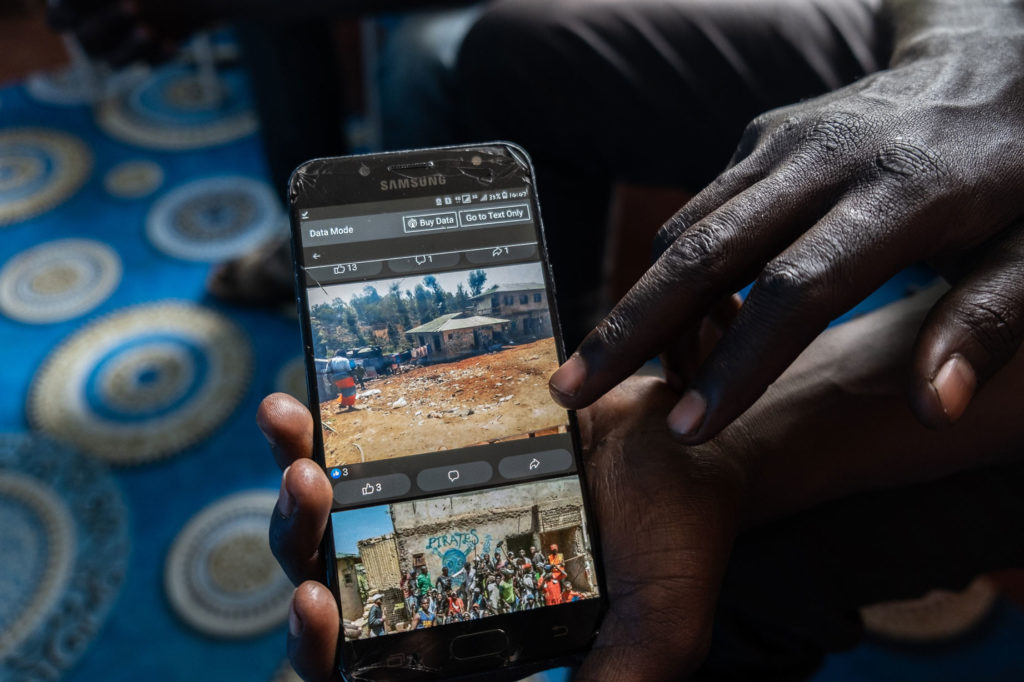
The regeneration of the area started in 2016 with about 40 youths from their gang. Today, only 15 of them are alive. Most, they say, were killed by Rashid. But the more the youths helped their community, the more the community became enraged by the police. And naturally, they tried to protect the youths.
In 2017, Rashid came to the park with a few other plainclothes officers and grabbed a member of the group, 25-year-old Christopher Maina, known as “Maich.” About 20 women were washing clothes around the water tanks at the time. “All the women followed the police, screaming and shouting at them, telling them not to kill him,” Mugendi recounts.
Rashid pointed his gun to the sky and shot into the air to disperse the crowd, Mugendi remembers. According to a report from the Mathare Social Justice Centre, he then aimed his gun at Maina, who was on his knees begging for his life, and released a series of bullets into his trembling body. In just a few seconds, Maina’s then-pregnant wife was left without a husband and his unborn daughter without a father.
Hourslong protests erupted in Mlango Kubwa, with residents hurling stones at the police, who responded with live ammunition. But this time it wasn’t just the youths protesting against police killings; scores of women, young and old, who used to run in fear following extrajudicial killings, also joined the protests, standing firmly with the young men against the police.
Rashid returned to the park that night with several other officers and fired bullets into the water tanks, the youths say. He smashed the windows of the community hall, trashed the washrooms, cut the water pipes, and released the chickens and rabbits, disrupting the services the youths were providing to the community. Mugendi suspects that Rashid was “angry that so many people had demonstrated against him” and that he “still saw us as gang members and was doing everything he could to disperse us from the land.”
But the community’s display of unity ushered in a new age of solidarity among residents in Mlango Kubwa.
“When we built back the trust between us and our community then the police were no longer targeting a few troubled youths, they were targeting the entire community,” Mugendi says, standing in front of the water tanks, the bullet holes now patched up. “It’s become clear now that this is not a war between the youth and the police, but a war between the entire community and the police.”
While Maina could not be saved, it is likely that all of Mathare Green Park’s youths would have been killed by police long ago if it were not for their community. Well aware of this, the youths have continued to fulfill the needs of their neighborhood, while their community, in return, provides them support and protection.
The youths have plans to raise funds to purchase firefighting equipment and provide training to peers on how to put out fires sparked at the behest of private developers. They also hope to develop their agriculture with permaculture techniques to further benefit the land and community.
“In Mathare we are by ourselves,” Mugendi says. “We have to rely on each other because if we relied on our government, we would still have no water or electricity. So we provide this to each other. The government is our enemy, so we have to stay united. It’s the solidarity in this community that has saved all of our lives and keeps us surviving.”
The Nairobi River flows through the Korogocho informal settlement, located next to Dandora. Two men stumble down the road, carrying a large blue bucket filled with liquid feces; they reach the edge of a hill and dump the contents. The brown waste stains the grass as it glides from the hill and into the river below. Without access to sewage systems, this is the only way residents in Korogocho can dispose of waste.
Across the street, just below a cement bridge connecting Korogocho to Dandora, is a charming walkway made from bamboo sticks, leading to an ecological park that borders the river. This area is managed by a group called Komb Green. They once called themselves “Guantánamo Boys” when they were a gang that planned robberies and hid from police in this same area.
Flocks of dozens of birds attracted to the organic waste at the Dandora municipal dumpsite, which partly borders Komb Green, circle above us. Yet somehow the air at the park is fresh and clean.
“We planted bamboo all along the river because it purifies the air and water,” says 26-year-old Robert Muchiri. “The water is badly polluted from people dumping sewage and waste in it. And the air has a lot of toxins in it and a foul smell because of the dumpsite. This is one way we try to clean it.”
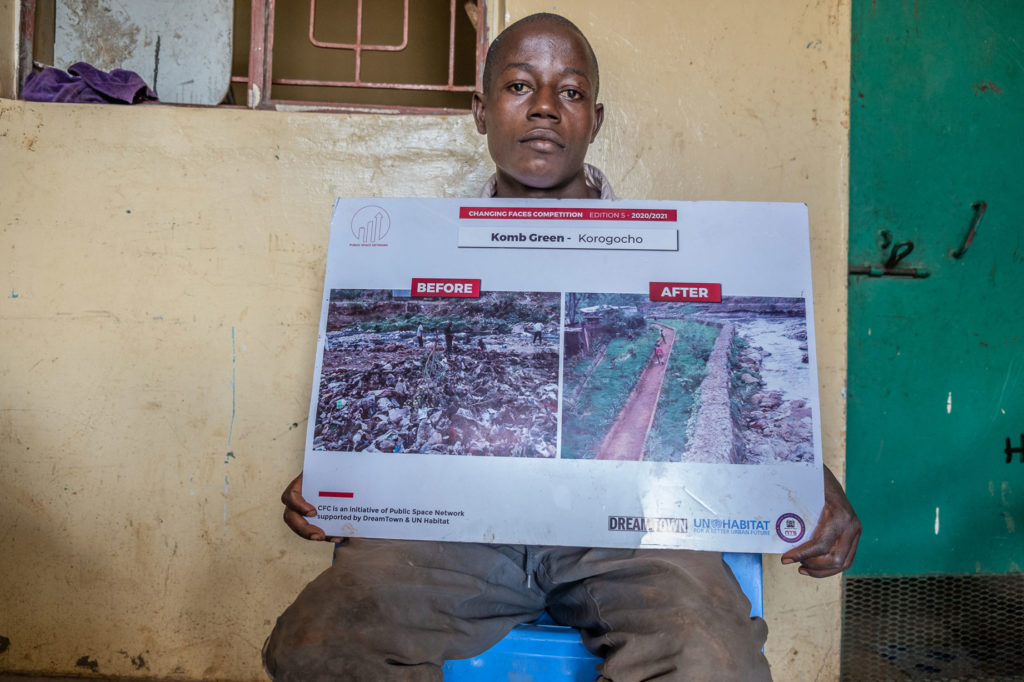
Muchiri has a large scar on his neck. He tells me he sustained it in 2017, when he was snatching phones from people during a crowded political rally in the city. A police officer caught him and then shot him directly in his neck.
“I have a lot more stories that I won’t tell you about,” Muchiri says, turning to me and flashing a grin.
This ecological park also used to be a dumpsite, where youths throughout the informal settlements often sheltered themselves when the police were after them.
“This was a really dangerous place,” says 33-year-old Frederick Okinda, the leader of the group. “A lot of people have been killed here. Many women have been raped here.”
But in 2017, Okinda received an unlikely sign that he believes was communicated to him by God, which convinced him to change. “We used to snatch handbags from women around the road,” Okinda recounts as a few women behind him are huddled along the riverbank, washing items they retrieved from the municipal dumpsite to prepare them to sell at the market.
“So I grabbed this woman’s handbag and instead of fighting me, she just told me: ‘Go with it and maybe it will change you.’”
“There was something heavy inside, so I got excited, hoping it was some cash,” he continues. “But when I arrived at this dumpsite here, I reached inside and pulled out a Bible. After this, I asked God to please never let me do this again. I felt like it was a sign because I went to rob someone for cash, and I ended up with a Bible. This Bible saved my life.”
Okinda began speaking to other gang members about finding a way out of their life of crime. Starting with about 14 youths, they returned to the same space that used to give them cover from police and began cleaning the area around the river.
While cleaning the river, they discovered 38 infant bodies in burlap sacks, presumed to be stillborns whom families did not have the funds to bury. The youths buried the bodies along the riverbed; the graves are marked by piles of rocks.
The youths developed a large space for children to safely play and began a community feeding program for vulnerable children and families in the area; they continue to feed hundreds of children twice a week.
After Muchiri was shot by police in 2017, he spent about 18 months in prison. When he was released in 2019, he found that most of his former gang had traded in their guns for shovels, farming and regenerating the environment.
“I didn’t want to leave crime,” Muchiri explains. “Stealing was our job. That’s how we fed our families. So who’s going to feed me if I give it up?” Muchiri continued carrying out robberies with 24-year-old Peter Mwangi, now also a member of Komb Green.
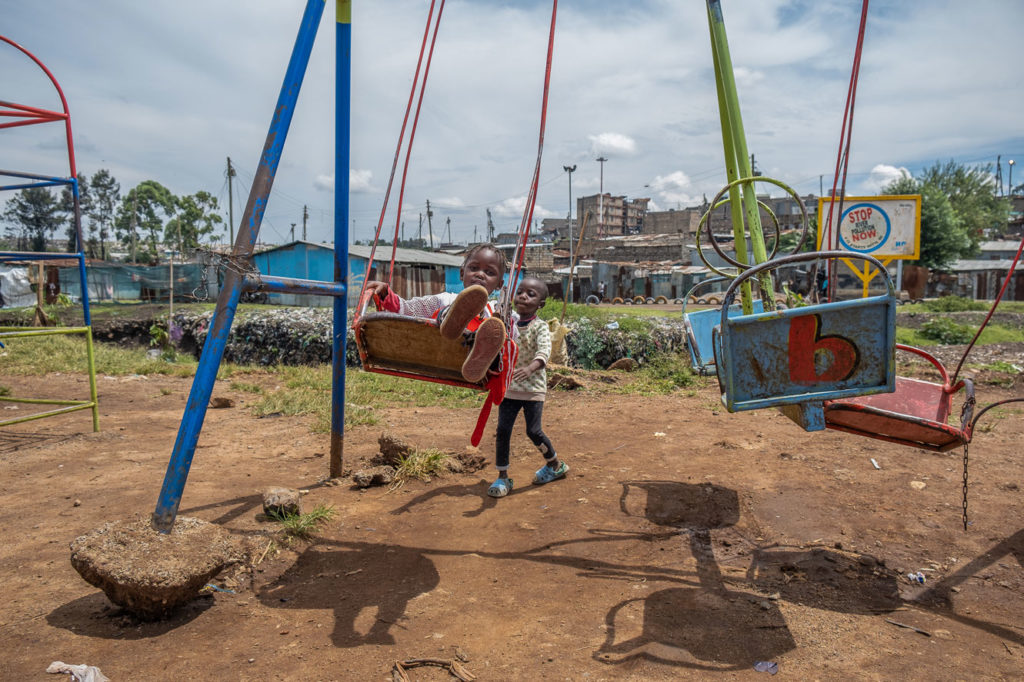
Mwangi sits quietly in between Muchiri and Okinda, listening intently but rarely speaking. “This guy,” Okinda says, waving his index finger back and forth at Mwangi. “He looks so innocent, right? He used to be the gun carrier for all the biggest criminals. He has a young look, so no one would suspect he was holding guns.”
Mwangi would pack the gang’s guns under his long jacket and walk ahead of them during robberies. “The police would just walk right past him because he looks so young,” Okinda explains. “So if we ever got in trouble with the police, they wouldn’t find any guns on us.”
About a year after Muchiri was released from prison, he and Mwangi were wanted by the police following a robbery; police combed through the informal settlements in search of the youths. “We knew that the police would either send us to jail for the rest of our lives or kill us,” Muchiri says. They ran to a minister at a local church for solace; for days, she prayed with them until the police suddenly dropped the case.
“We saw that we were clearly being protected by God, and we were once again given another chance at life,” Mwangi says, still displaying the youthful innocence that had once made him a coveted gun carrier. Like the other youths, Muchiri and Mwangi knew that if they did not listen to these messages and change their lives, they would end up dead.
“We decided finally to just listen to God and follow him with a full heart,” Muchiri tells me. “I realize now that we’re becoming so close to God by restoring nature. When God created us, he commanded us to care for his creations.”
“So we are doing what we have been commanded to do. Every day when we clean or remediate the land and river, we are worshiping God,” he adds. “And at the same time our community now has clean air to breathe and healthy food to eat.”
The former Guantánamo Boys are still trickling out of prison, shocked upon their release to find the space where they had organized their robberies now transformed into an ecological park. “Now when our friends come out of jail, they are finding a safe space and a positive environment,” Muchiri says.
Despite the youths in Dandora, Mathare and Korogocho all coming to the same conclusions around the same time, they had not heard about one another until recently, when they entered a citywide competition aimed at encouraging youths to develop neglected areas around Nairobi into healthy and safe spaces.
But they say they were not surprised when they discovered each other. “All of us in the slums were going through the same things,” says Mugendi, from Mathare Green Park. “So it makes sense we’d receive the same messages and decide to do similar things to survive.”
The movement has now spread throughout the informal settlements, with hundreds of youths giving up on crime or idleness to serve their communities. None of these youths has received any assistance from the government, despite taking over the provision of municipal services.
“Before, when you said you were from Korogocho, people would immediately think you were a gangster. If you were a lady, they would assume you were a prostitute,” Muchiri says, standing next to a sign at the park erected by the group that warns residents against throwing trash into the river.
“This would affect the way people in Korogocho saw themselves. You would feel scared or ashamed to say you’re from Korogocho. But now we’re very proud to represent Korogocho. We have so much love and unity here. I hope one day the whole world can come here and see it.”
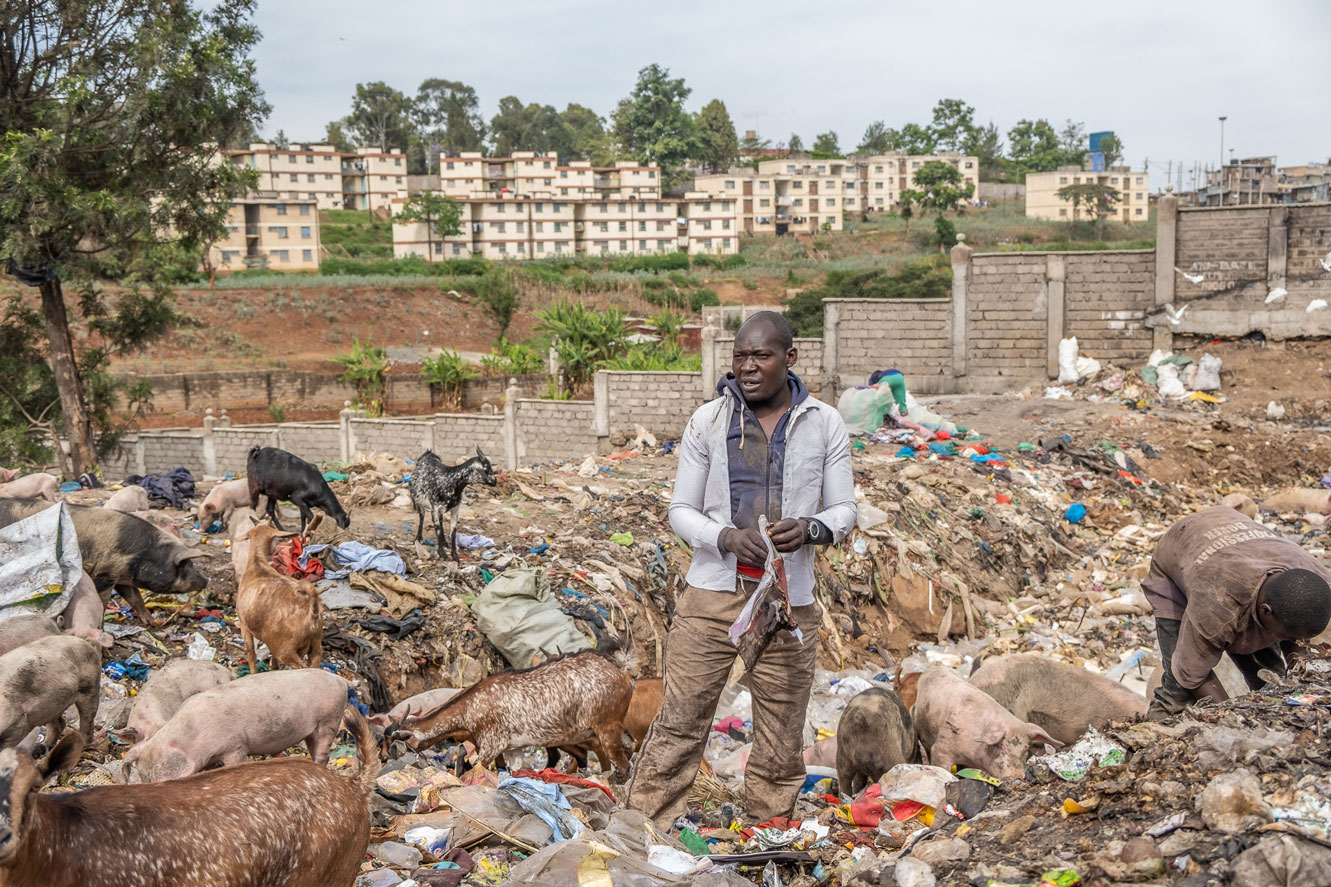
One of the members of the Mathare Green Park Movement, Benson, sorts out some of the trash after collecting it from around Mathare. This is one of the ways the youths gain some income from the community / Jaclynn Ashly
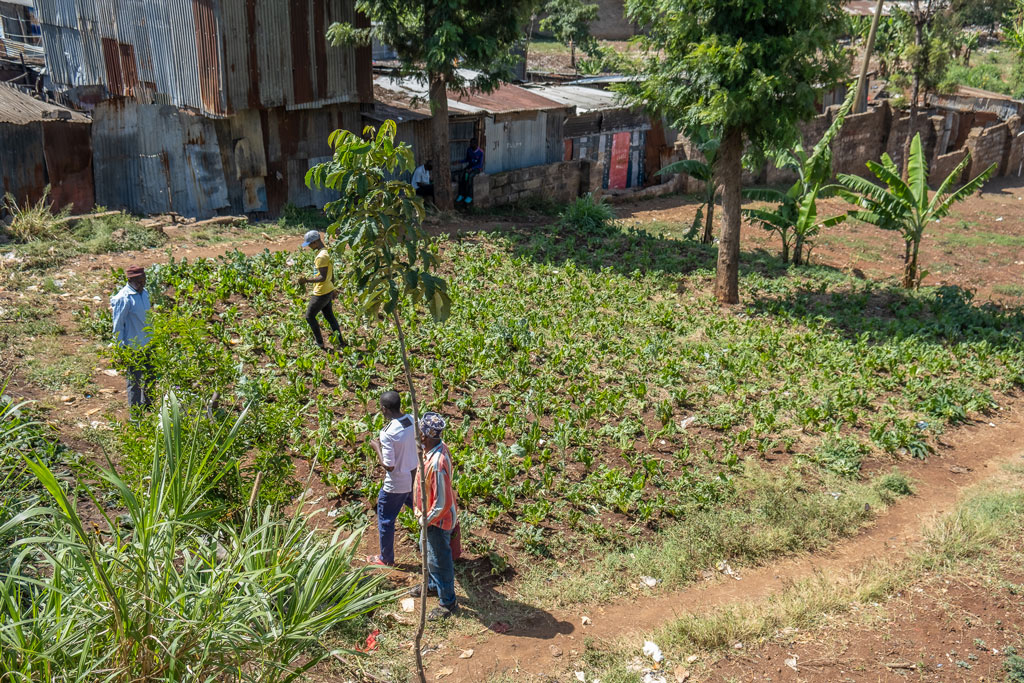
The farm in the Mathare Green Park where the reformed youths are planting spinach / Jaclynn Ashly
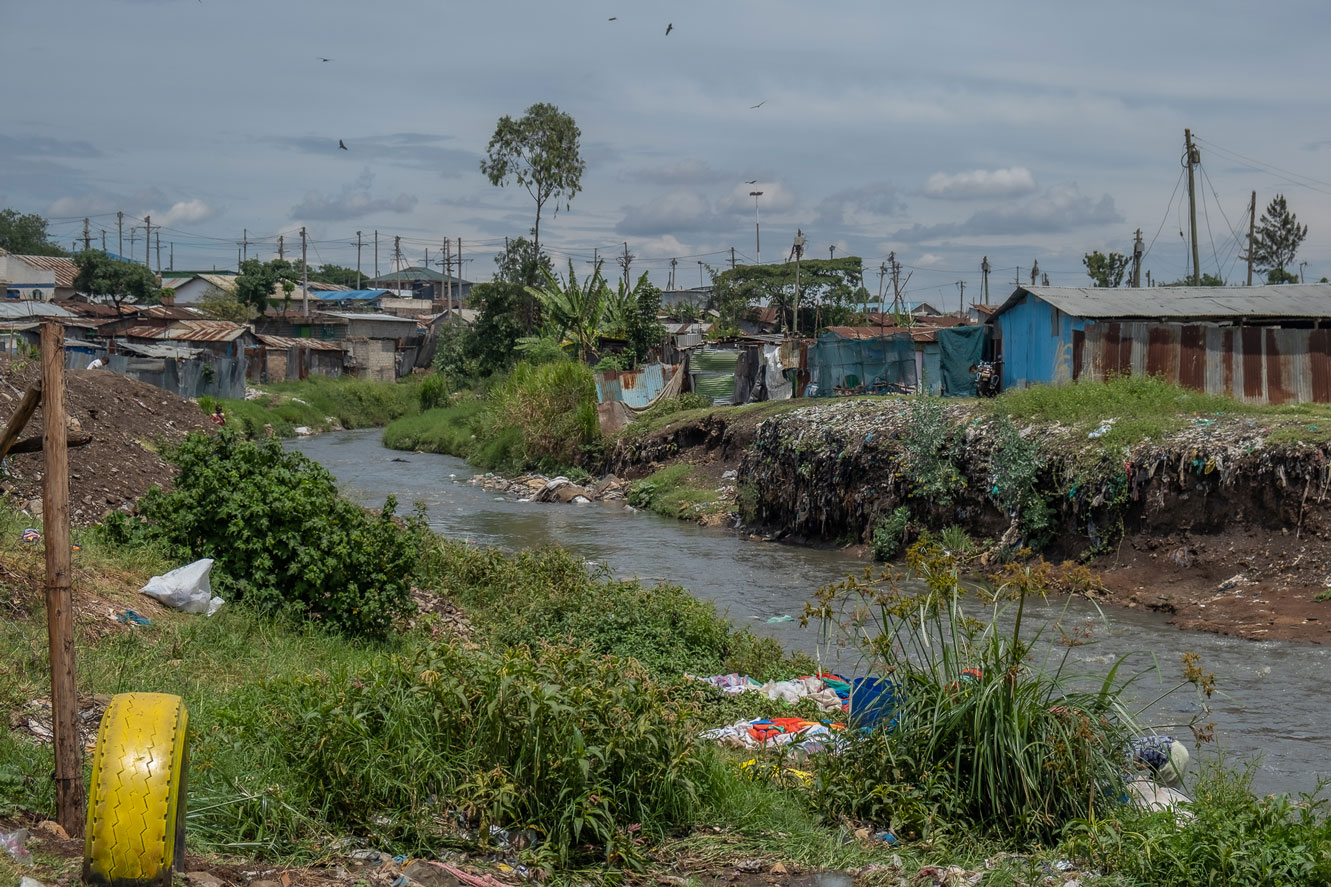
Nairobi River at Komb Green. Directly behind the houses is the Dandora municipal dumpsite, one of the largest landfills in Africa / Jaclynn Ashly


